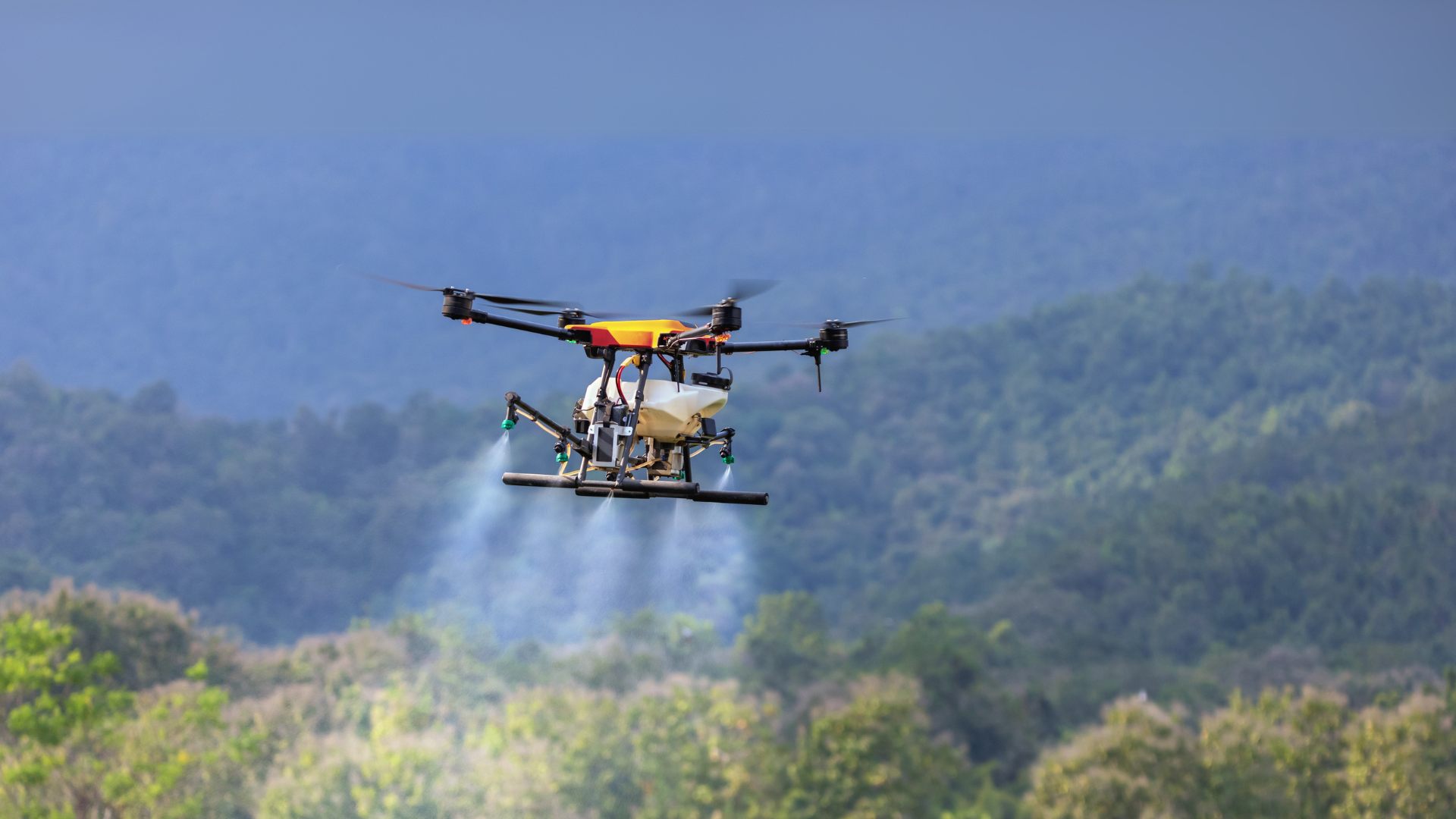The low-altitude economy, a term first popularised in China, refers to economic activities operating in airspace up to 1,000 metres above ground. Encompassing applications such as drones, flying cars and taxis, precision farming technologies, infrastructure inspections, and emergency medical services, this sector is rapidly emerging as a new frontier for growth and is expected to revolutionise how goods, people, and services move – particularly in hard-to-reach remote or congested areas. The economic potential it holds is also significant. The global drone market alone is projected to reach USD 57.8 billion by 2030, with expanding use across sectors such as energy and logistics.
While the concept has been around for some time, recent growth has been catalysed by rapid advancements in drone technology, AI-powered navigation systems, and regulatory experimentation, particularly in China, where much of the progress is currently concentrated. In the Association of Southeast Asian Nations (ASEAN), where the industry is still relatively nascent, the potential for low-altitude innovation is particularly compelling. The region’s archipelagic geography, underserved rural areas, and increasing demand for efficient logistics and public services create ideal conditions for scaled deployment of these technologies. Seizing this opportunity will require coordinated action across regulation, investment, and innovation, to help ASEAN claim its share of the skies.
China is setting the pace
China has emerged as the undisputed global leader in low-altitude innovation, accounting for over 70% of global drone-related patent applications. In late 2024, the government set up a new department to oversee its low-altitude economy in a landmark boost to the sector, which is expected to grow over sixfold from 2023 to reach CNY 3.5 trillion (USD 486 billion) by 2035. Local governments across the country, from Shenzhen to Hefei, are building dedicated low-altitude economic zones, supported by real-world use cases in emergency medical delivery, aerial surveys, and urban logistics.
Chinese food delivery giant Meituan, a pioneer in drone-based logistics, currently operates over 50 drone delivery routes across major cities including Shenzhen, Beijing, and Nanjing. As of 2024, its drones had completed over 450,000 orders since the establishment of the company’s drone unit in 2017. Meanwhile, companies such as EHang, a manufacturer of autonomous aerial vehicles (AAVs), are trialling flying taxis, with expectations of integrating them into public transport systems on the mainland within the next five years. These advancements not only highlight the strength of China’s innovation ecosystem but also offer a glimpse of what could be possible in ASEAN if the region invests early and decisively in its low-altitude economy.
ASEAN must seize the moment
ASEAN countries are uniquely positioned to capitalise on the growth of the low-altitude economy. The region faces persistent accessibility challenges – ranging from last-mile delivery to remote and rural communities to time-critical medical transport across densely populated urban areas. A range of applications from the low-altitude economy can help bridge these gaps. Drones can improve logistics and surveillance; flying taxis offer alternatives for urban mobility; and unmanned aerial vehicles (UAVs) support precision agriculture. Together, these innovations can enhance service delivery, improve connectivity, and boost economic inclusion.
Agriculture, in particular, presents a compelling opportunity. Globally, it now sees the second highest usage of drones (after construction), with the agricultural drone market projected to grow from USD 1.3 billion to USD 5.7 billion by 2026. Other technologies such as AI-enabled aerial imaging, autonomous crop-spraying vehicles, and low-altitude monitoring systems are also gaining traction. This signals the major potential for agriculture-driven ASEAN economies. In response to rising demand for automation, drone companies such as Malaysia’s Aonic are actively eyeing expansion in Indonesia and the Philippines – markets with vast farming activity – as well as in Vietnam, where the government has expressed interest in drone applications for smart farming and broader digital transformation initiatives.
The benefits extend beyond agriculture. In Makassar, Indonesia, drones were deployed during the COVID-19 pandemic to deliver medicine and food to patients in isolation, demonstrating how low-altitude solutions can transform logistics and emergency response. By bypassing conventional delivery routes, drones helped reduce delivery times and ensured essential supplies reached those in need without delay.
Managing risks, unlocking benefits
However, several risks and challenges continue to hinder further growth of the low-altitude economy. Chief among them is regulatory fragmentation: varying drone licensing regimes, import restrictions, flight permissions, and air traffic integration rules have created friction for commercial drone operators across ASEAN. For instance, in Singapore, sightings of unauthorised drones in the vicinity of the national airport once led to the delay of 37 flights and the closure of a runway, highlighting the safety and coordination challenges that come with the expansion of the sector.
Infrastructure gaps further limit progress. The absence of enabling systems such as dedicated drone corridors, automated air traffic control, and real-time digital management platforms has constrained the ability of drones to operate safely and at scale.
Furthermore, the expansion of the low-altitude economy has also raised other social concerns. Labour displacement is a key issue, particularly in countries where logistics and delivery services (often staffed by gig or informal workers) provide a vital source of income. In such cases, rapid automation may face public resistance, especially if not accompanied by adequate support for reskilling and inclusive policies. However, the case study of China has illustrated that growth of the sector can in turn unlock new job opportunities, with industry estimates suggesting a shortage of over one million drone pilots in the country.
Lastly, privacy and safety concerns have also been raised, especially in residential areas that may experience negative impacts from drone surveillance.
Despite these, ASEAN still has a strong opportunity to shape the development of the low-altitude economy on its terms. Government and industry players should work closely to develop comprehensive policy approaches, coupled with public education. Clear regulations will be crucial in addressing privacy concerns by defining permitted flight zones and data collection practices, and ensuring the safe and responsible use of the technology. Furthermore, sandboxes (similar to those used for safe testing of AI or fintech innovations) will be crucial for piloting low-altitude economic zones or urban drone corridors. These testbeds can generate local evidence of clear benefits, inform policy, and unlock public-private partnerships. Governments should also invest in upskilling programmes for drone operations and maintenance – creating a future-ready workforce rather than one left behind. These initiatives can help lay the groundwork for a regional ecosystem that is safe, inclusive, and globally competitive, enabling the region to capture the full economic and social benefits of this emerging sector.
A chance to lead, not just follow
ASEAN stands at a pivotal moment in the development of the low-altitude economy, with a crucial opportunity to lead in shaping the future of its skies. By addressing regulatory bottlenecks, enabling pilot projects, and investing in digital airspace infrastructure, the region holds significant potential to unlock economic and social value across sectors such as healthcare, agriculture, logistics, and emergency services.
The low-altitude economy is no longer a futuristic concept – it’s an opportunity at our doorstep. To find out more about how Access Partnership can help you unlock its potential across ASEAN, contact Cheng Wei at [email protected] or Chailyn at [email protected]. Examples of our work in the mobility space can be found here.


Authors








